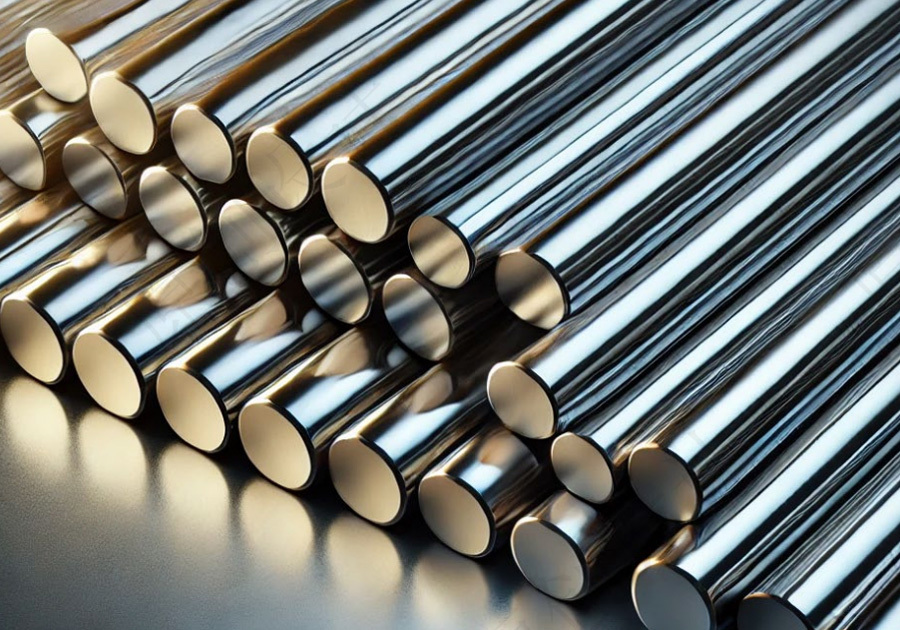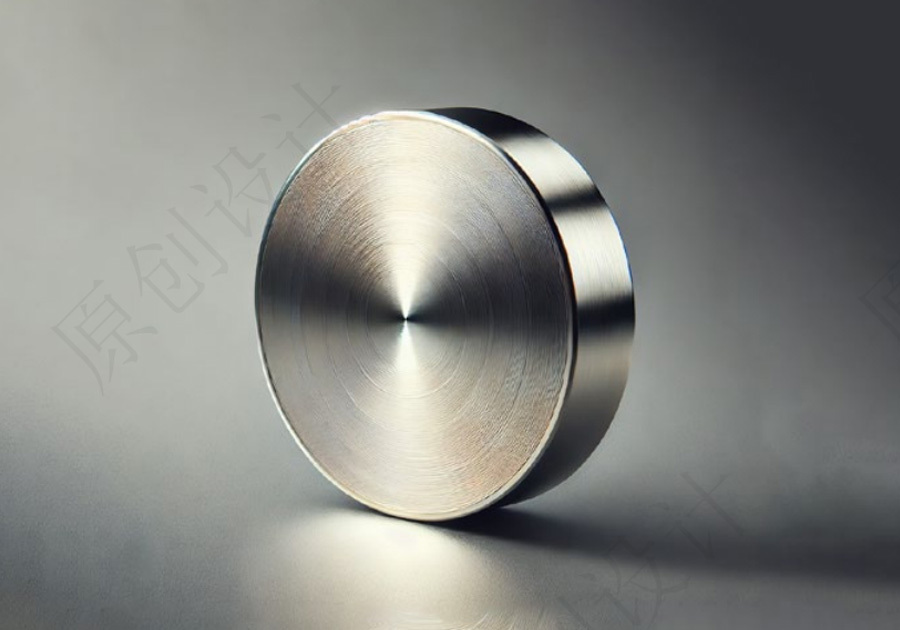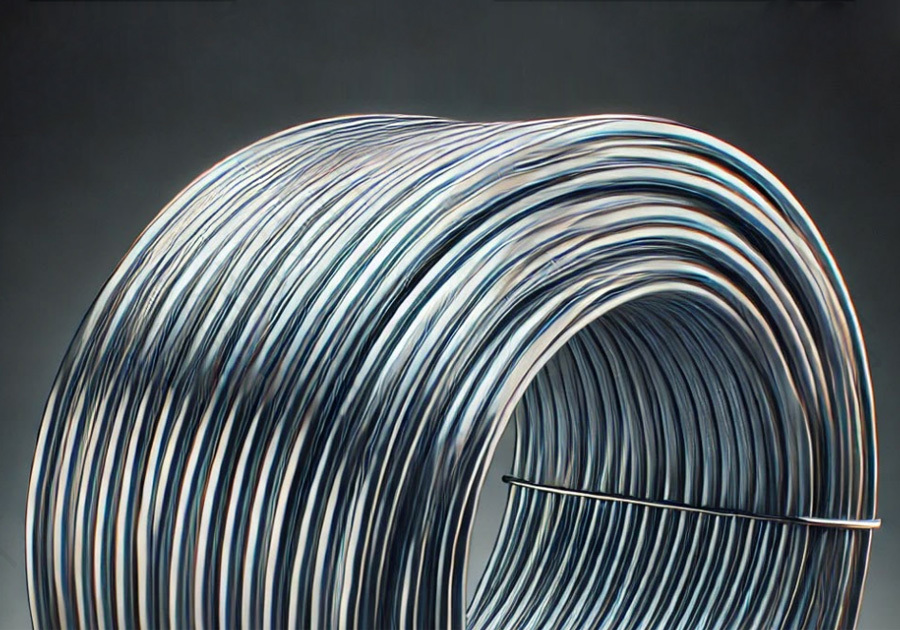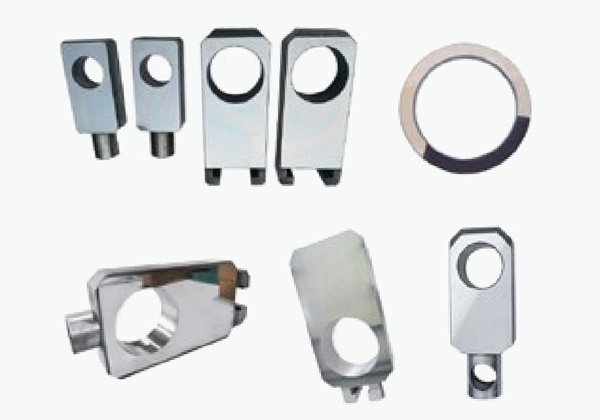DETAILED
Steam injection series
MicroThermics' R&D system matches production thermal processes, allowing your product to go from lab to production in a single step.
Category:
MicroThermics UHT/HTST
Keyword:
Foreign trade
DYNAMIC DAYLIGHT
Tel:
PRODUCT DETAILS
MicroThermics' R&D systems match production thermal processes, allowing your product to go from lab to production in a single step. Our systems make your research more efficient than any other method through rapid production of precise product cycles and significant reduction in your time to market. Our steam injection series, UHT/HTST (Ultra-High Temperature and High-Temperature Short-Time) processors appeal to R&D personnel who want steam injection for producing plant-based beverages. In addition, these systems can indirectly heat for HTST and UHT non-steam injection products, and they can also perform hot fill and other continuous heating processes. Their flexible operation, simplicity, and extensive upgrade path make them one of our most popular models. By precisely simulating the entire production process, we eliminate causes of wasted time and money, preventing production failures.
In short, investing in a MicroThermics’ system saves you valuable time and money.
Power: Flow rate 0.8-4 liters/minute
Processing Range
| Model | | Pre-heater | Final Heater | Viscosity Range | Holding Time (seconds) * |
| DIP | 305°F (152°C) Maximum | 305°F (152°C) Maximum | Low to High | 3, 6, 9, and 15 |
| DIM | 305°F (152°C) Maximum | 305°F (152°C) Maximum | Low to High | 3, 6, 9, and 15 |
| SIP | 305°F (152°C) Maximum | N/A | Low to High | 3, 6, 9, and 15 |
| SIM | 305°F (152°C) Maximum | N/A | Low to High | 3, 6, 9, and 15 |
Processing - Batch processing down to 3L flow rates
| • UHT Processing • Ultra-pasteurization • Continuous Heating |
• Hot Fill • Hot Fill Holding • Candy Syrups and more |
• Conventional and Flavored Milks • Nutritional Supplements • Ice Cream Ingredients |
• Broths • Sauces • Juices, Teas, and Coffees • Puddings and more! |
Features and Options
Functions (Partial List)PLC Control and Data Acquisition • Sanitary Design • PLC Control/Data Acquisition • Vacuum Chamber and Vacuum Pump • Easy Operation • Dual Product Inlet • Variable Speed Product Pump - Adjustable Flow Rate and Holding Time • 3 Holding Tubes • Product Cooler • Back Pressure • Junction Box • Lab Bench Enclosure with Sink |
Optional (Partial List)Additional Holding Tubes and Coolers • Additional Temperature/Pressure Sensors • Spare Heat Exchanger (e.g., Plate Type) • Automatic Filling Control • CE Marking, NRTL Marking • Circular Chart Recorder • Clean-in-Place Enclosure/Aseptic Product Outlet • Enhanced PLC Control/Data Logging • In-Line Homogenization • Product Pump Run Dry Protection Starch Hydration • Boiler, Water Chiller Unit • Spare Parts, Tool Kit, and more! |
UHT/HTST DIPW Overall Flow Diagram (Steam Injection Heating)

Direct/Indirect UHT/HTST (DIPW)
Steam Injection UHT Processing (2 Heaters)
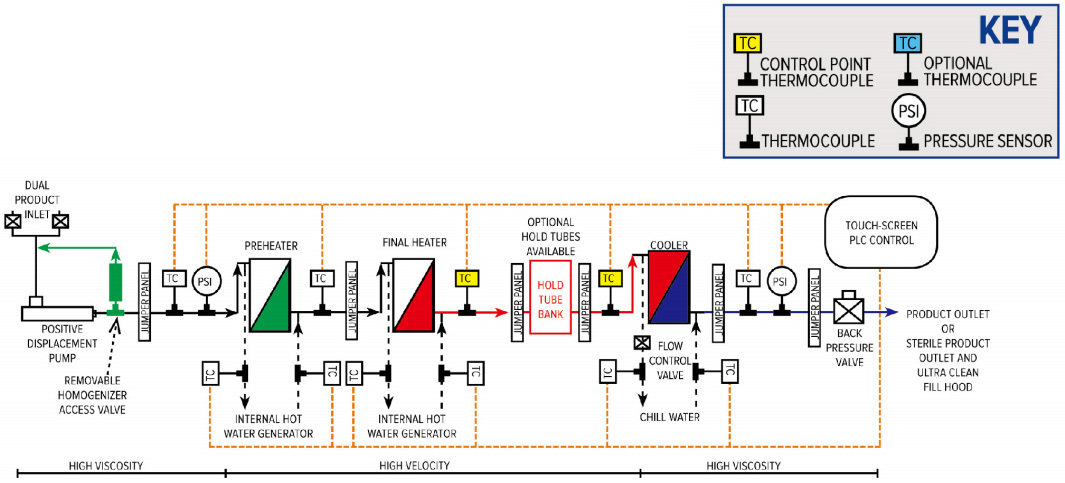
Direct/Indirect UHT/HTST (DIPW)
UHT or HTST Processing (2 Heaters)
Physical Requirements
Utilities - Model Dependent• Steam: 80 PSI (5.6 kg) Clean Steam • Potable Water • Cooling Water • Steam: 80 PSI (5.6 bar) Clean Dry Steam • Electrical: 1Φ, 110/220 V • Compressed Air: 18-20 PSI, • Drainage: Standard 1.5-2 inch drain trench |
Dimensions - Main Unit• Workbench height: 38 inches (0.97 meters) • Workbench depth: 32 inches (0.85 meters) • Overall length: 70 inches (1.8 meters) • Overall height: 68 inches (1.74 meters) |
Dimensions - Module• Workbench height: 38 inches (0.97 meters) • Workbench depth: 32 inches (0.85 meters) • Overall length: 40.5 inches (1.03 meters) • Overall height: 68 inches (1.74 meters) |
FAQ

What are the regular maintenance tasks for a website?


What are the differences between UI and UX in website design?


What types of website hosting services are there?


What is the function of website traffic statistics tools?


How to choose the right website building technology for yourself?


How to start building your own website?

ONLINE INQUIRY
We will contact you within one working day. Please pay attention to your email.
RELATED PRODUCTS
Previous Page
Next Page




